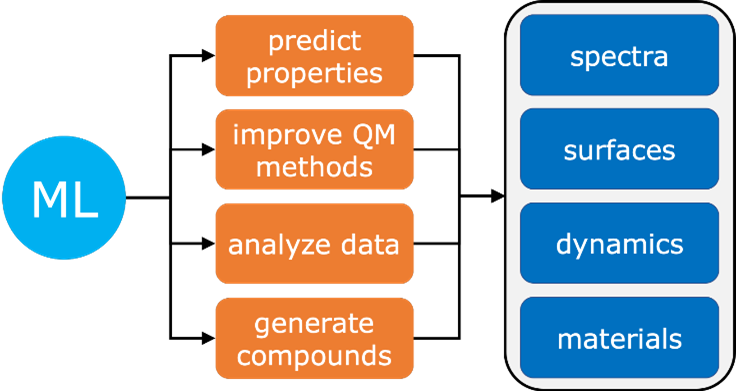Book chapter discusses practical aspects of how to use ML for exited-state dynamics.
In brief:
- The chapter offers a review of the current state of the art of excited-state dynamics driven by machine learning (ML).
- Two tutorials are provided. One about HEOM and another about surface hopping.
Machine learning (ML) is promoting a revolution in the way we do quantum chemistry. However, for those not acquainted with ML methods, it’s challenging to take the first steps in the field. In a new collaboration between Dral’s and our group in Marseille, we wrote a book chapter to help this endeavour.
This book chapter briefly introduces how machine learning can assist excited-state dynamics. We start with an overview of two traditional excited-state dynamics, a two-state system-bath approach in full quantum dynamics (using the hierarchical equations-of-motion approach, HEOM) and the trajectory surface hopping (with the fewest switches approach) in mixed quantum-classical dynamics. Then, we introduce a combination of machine learning with each of these two approaches.
Finally, we present case studies in a tutorial format, enabling readers to perform simple dynamics simulations on model systems and realistic molecules.
MB
Reference
[1] L. Zhang, A. Ullah, M. Pinheiro Jr, P. O. Dral, M. Barbatti, Excited-state dynamics with machine learning, in Quantum chemistry in the age of machine learning, edited by P. O. Dral (Elsevier, 2022), p. 329. DOI: 10.1016/B978-0-323-90049-2.00008-1



0 Comments